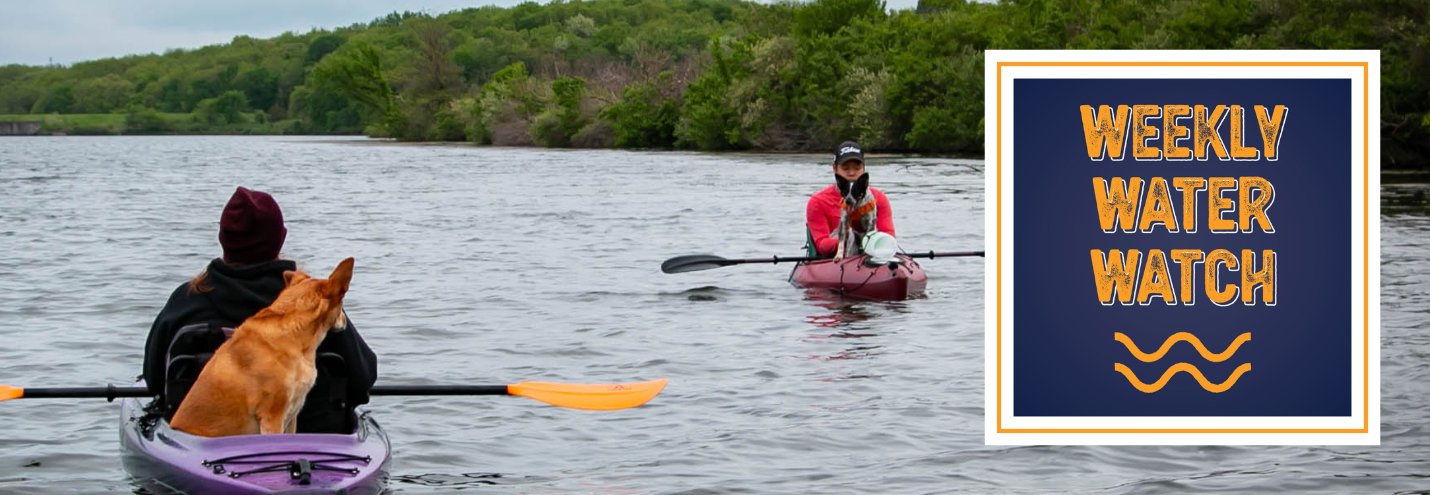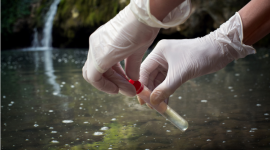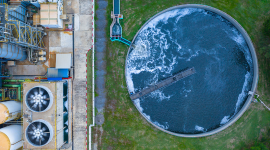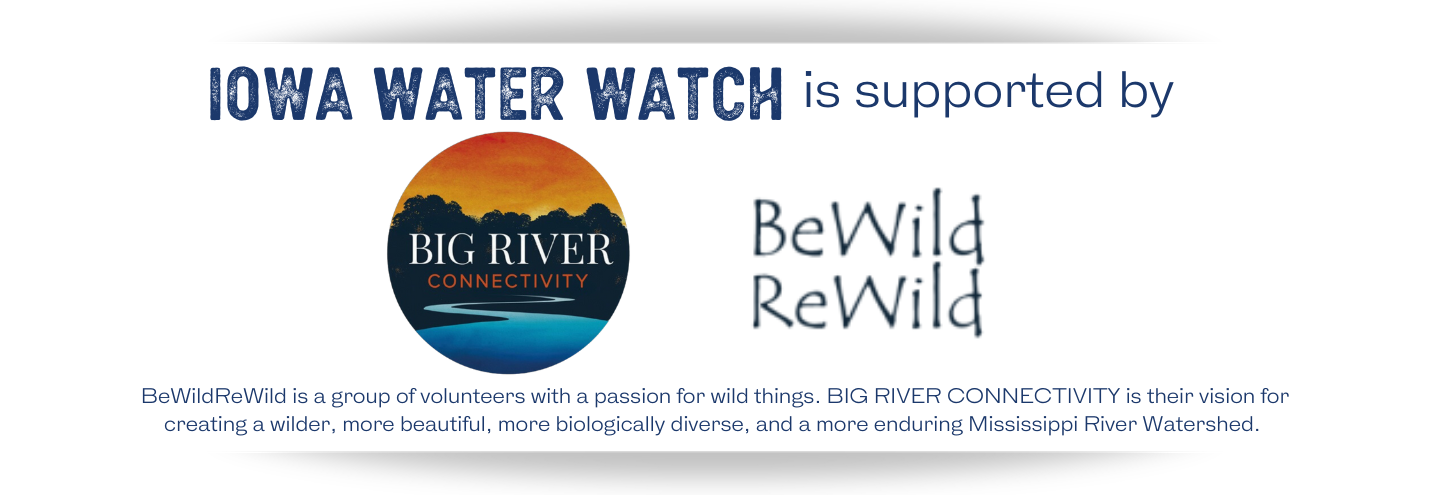|  | | 12 Beaches with an E. coli Advisory:
Backbone Beach (Dundee, Delaware County, IA)*
Beed’s Lake Beach (Hampton, Franklin County, IA)*
Denison Beach (Black Hawk Lake, Lake View, Sac County, IA)*
Emerson Bay Beach (West Okoboji Lake, Milford, Dickinson County, IA)*
George Wyth Beach (Waterloo, Black Hawk County, IA)*
Lake Ahquabi Beach (Indianola, Warren County, IA)*
Lake Darling Beach (Brighton, Washington County, IA)*
Lake of Three Fires Beach (Bedford, Taylor County, IA)*
Lewis and Clark Beach (Blue Lake, Onawa, Monona County, IA)*
Nine Eagles Beach (Davis City, Decatur County, IA)*
Pleasant Creek Lake Beach (Palo, Linn County, IA)*
Union Grove Beach (Gladbrook, Tama County, IA)* 1 Beach with a Microcystin Advisory:
Lake Darling Beach (Brighton, Washington County, IA)* 1 City and County Beach exceeds the state’s advisory threshold for E. coli.*
View the map on our website to see where it is. Note: Beach monitoring has resumed at all Okoboji and Spirit Lake beaches this week. Saylorville's Oak Grove Beach is closed due to flooding. *Data from the Iowa DNR State Park Beach Monitoring Program |
| IEC Launches 'Iowa Water Watchdogs' Awareness Campaign |
| DES MOINES, IA – This summer, the Iowa Environmental Council announced its newest education and awareness campaign, “Iowa Water Watchdogs.” The goal of the campaign is to raise awareness about the risks of cyanotoxin poisoning in dogs that come into contact with harmful algae blooms in Iowa’s natural waterways. Cyanobacteria, also known as blue-green algae, can bloom rapidly in lakes, ponds, and slow-moving streams after periods of warm weather and excessive fertilizer runoff. These harmful algae blooms (HAB) can produce cyanotoxins, such as microcystin, that are harmful to pets and human health. The Iowa Department of Natural Resources monitors these algal toxins weekly at 39 state park beaches across the state and issues beach advisories for microcystin concentrations above an 8 microgram per liter safety threshold. Cyanotoxins such as microcystin can cause flu-like symptoms in humans that ingest or inhale them or rashes from contact with the skin. Dogs are at a greater risk of cyanotoxin poisoning because of their behaviors in the water, including swimming, drinking, and licking water and scum off their fur after being in the water. Because of their smaller size, even a small dose of cyanotoxin can lead to serious health impacts. Symptoms of cyanotoxin poisoning in dogs range from disorientation to tiredness, vomiting, and more serious outcomes like seizures, paralysis, or even death. “Every year, we see tragic headlines from across the country about dogs dying suddenly after coming into contact with harmful algae blooms,” said Alicia Vasto, IEC’s Water Program Director. “We are using this campaign to raise awareness about the risks for dogs, and to emphasize the old adage about water safety to their caretakers – if in doubt, stay out.” Iowa has had nearly 100 weekly beach advisories for cyanotoxins in the last 5 years. IEC sends weekly updates of state and federal beach monitoring results through its Weekly Water Watch e-newsletter to highlight high-risk beaches for recreation. If you think your dog may have come into contact with a harmful algae bloom and they begin exhibiting any symptoms of cyanotoxin poisoning, take them to the vet right away. Learn more about the risks, symptoms, and how to keep your dog safe from cyanotoxin poisoning with IEC’s new factsheet. |
|
|
| |  | |  | IEC Sends Letter to DNR Regarding Water Quality Testing Amidst unprecedented flooding in Northwestern Iowa, IEC submitted a letter to the Department of Natural Resources (DNR) to request that unspent funding for water testing be applied to additional monitoring of Iowa public drinking water wells, surface waters, and privately-owned wells. The Iowa DNR reported that it has significant unused funding appropriated to conduct ambient water quality monitoring. The most recent report from March 31 showed $2,057,870 remaining for the final quarter of the fiscal year to conduct surface and groundwater quality monitoring. The severe flooding in Northwest Iowa likely contains a cocktail of pesticides and other chemicals that risk the health of Iowans who may come in contact with them. Floodwaters have entered peoples’ homes and exposed them to any contaminants in the water, and drinking water sources were contaminated. IEC is calling on the DNR to utilize its resources during this critical time to test the state’s waters, investigate the impacts of flooding on water quality, and demonstrate the ongoing need for appropriations for water quality monitoring. The department has a responsibility to inform Iowans about their water quality and protect Iowans from water contamination. Read the entire letter here. |
|
|
 | River Days of Action Annual Report The Mississippi River Network's (MRN) River Days of Action spurred engagement from water advocates across the watershed, from Headwaters to Gulf. The two-week-long event organized recreation events, webinars, restoration and clean-up projects, lectures, and tours. This resulted in 29 events with nearly 2,000 attendees. IEC was proud to take part in River Days of Action with two educational meetings and community listening sessions. Water Program Director Alicia Vasto and Staff Attorney Mike Schmidt spoke in Dubuque and Strawberry Point on IEC's recent petition to the EPA. These events helped raise awareness of the health and pollution issues caused by animal feeding operations (AFO) in the Driftless area, while encouraging community members to speak up on their water quality concerns. If you missed these in-person sessions, IEC has a webinar on our petition on our YouTube channel. You can also visit the River Days of Action archive to read the full impact report and watch recorded events and webinars, like this year’s ‘Restoring Our River: Exploring 30 Years of Upper Mississippi River Science and Restoration’. | |
|
|
 | Understanding Water and Wastewater Treatment Do you know where your water runs before and after turning on the tap? Community water systems are essential to providing safe, clean drinking water to residents for daily use. Untreated water, from sources like underground aquifers or surface water reservoirs, are pulled into a treatment facility operated by a municipal utility. The water then goes through multiple steps of treatment to assure that it is disinfected and safe for human consumption. Similarly, wastewater treatment systems involve multiple phases of clarification and disinfection, and then typically discharged into a local body of water. Some water systems, such as that considered by the community of Osceola, choose to recycle wastewater into drinking water systems. In order to maintain infrastructure for water treatment and distribution, the EPA's 7th Drinking Water Infrastructure Needs Survey and Assessment found that systems nationwide will require roughly $106 billion for water quality, $421 billion for distribution and transmission, and $25 billion for water source development over the next 20 years. Create a free account on the Water Program Portal to learn more about what it takes to provide healthy water to communities. |
|
|
| |  | | What's new in Iowa's water news: |
|
|
| | |  | | | Iowa Environmental Council
505 Fifth Ave., Suite 850
Des Moines, Iowa 50309-2317
515-244-1194 | iecmail@iaenvironment.org |
|
|
|
|
|